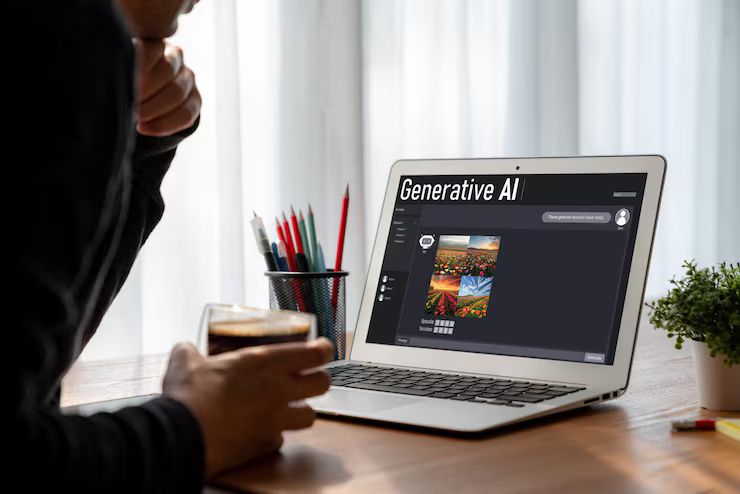Artificial Intelligence (AI) is reshaping how we produce, edit, and deliver video content. Traditionally, video production required large crews, expensive software, and countless hours of manual editing. Today, AI has introduced automation, real-time editing, facial recognition, voice generation, and smart scriptwriting into the process.
The integration of AI in video creation isn't about replacing human creativity—it’s about enhancing efficiency, improving quality, and making video production more accessible for businesses, educators, marketers, and content creators of all levels. From deepfake videos to automated highlight reels, the capabilities of AI in video production are evolving rapidly.

Importance – Why AI in Video Production Matters Now
As digital content becomes the centerpiece of communication, video has emerged as the most engaging format. Whether for education, marketing, training, or entertainment, high-quality video is essential. However, traditional video production can be time-consuming and resource-heavy.
AI addresses several key challenges:
-
Speed: AI automates tasks like transcription, scene detection, and editing, reducing production time drastically.
-
Cost-efficiency: Small teams or solo creators can produce professional-grade content without high-end studios.
-
Accessibility: AI voiceovers, subtitles, and multilingual dubbing open video content to wider audiences.
-
Scalability: Businesses can generate multiple video variations (languages, platforms, demographics) with minimal human input.
This transformation is empowering a wide range of users—from YouTubers and startups to large enterprises—to produce tailored, high-impact content at scale.
Recent Updates – Emerging Trends and Developments (2024–2025)
AI video tools have advanced significantly in the last year. Here are some key updates from the industry:
| Trend | Details |
|---|---|
| AI Avatars and Deepfakes | Tools like Synthesia and HeyGen let users create talking avatars using just text. |
| Text-to-Video AI | Models like Runway ML Gen-2 and Pika Labs can generate short videos from text prompts. |
| Auto-Editing and Clipping | Descript and Wisecut can automatically remove filler words, generate cuts, and add subtitles. |
| AI Scriptwriting | Tools like Jasper and ChatGPT help script video content faster based on brief inputs. |
| Voice Cloning & Narration | Services such as ElevenLabs can clone voices or create professional narrations in multiple languages. |
| Multilingual Translation | AI dubbing tools like Papercup and Dubverse are bridging global communication gaps. |
Laws or Policies – How Regulations Affect AI Video Use
The use of AI in video production has drawn increasing attention from regulators and governments around the world, especially due to deepfakes and misinformation risks.
United States
-
The DEEPFAKES Accountability Act (proposed 2023) encourages watermarks or disclosures for AI-generated video.
-
The FTC monitors AI use in advertising to prevent deceptive practices.
European Union
-
The AI Act, passed in 2024, classifies AI video tools based on risk and mandates transparency for synthetic content.
-
AI-generated content must be clearly labeled when used in public communication.
India
-
The Digital India Act (2025 Draft) includes AI-generated media under its proposed framework, emphasizing user consent and content labeling.
-
FSSAI and MIB also recommend disclosures for AI-generated educational or health-related content.
In general, creators are encouraged to add disclaimers and transparency notices for AI-enhanced or fully synthetic video content to build trust and comply with local laws.
Tools and Resources – AI Platforms for Video Creation and Editing
Here's a list of AI-powered tools that are transforming video workflows:
| Tool | Functionality |
|---|---|
| Runway ML | Text-to-video and real-time editing |
| Pictory | Turn blogs or scripts into engaging videos |
| Synthesia | Create AI avatar videos with multilingual support |
| Descript | Audio editing, transcription, and screen recording |
| Lumen5 | Turn articles or text into animated social videos |
| Magisto | AI editing based on music, pace, and mood |
| HeyGen | Realistic avatars for corporate or explainer videos |
| Wisecut | Auto video trimming and AI subtitle generation |
| Veed.io | Browser-based AI editing with text overlays and effects |
| Kapwing | Collaboration-focused platform with templates and AI scripts |
FAQs
Q1. Can AI replace human video editors completely?
Not entirely. While AI can handle repetitive and technical tasks like trimming or subtitles, human creativity is still essential for storytelling, tone, emotion, and context.
Q2. Are AI-generated videos legal to publish online?
Yes, as long as they comply with copyright, privacy, and disclosure regulations. Platforms like YouTube or Instagram may require disclaimers for AI-generated faces or voices.
Q3. How accurate are AI voiceovers and subtitles?
Modern AI tools have reached near-human accuracy, especially in English. However, manual review is still recommended for sensitive or professional content.
Q4. Is it safe to use deepfake or avatar tools?
Yes, if used responsibly. Avoid using another person’s likeness or voice without consent. Stick to platforms that provide ethical guidelines and watermarking features.
Q5. What are the risks of AI in video production?
Misinformation, unauthorized identity usage, and low-quality automation are potential risks. These can be mitigated through transparency, ethical use, and regulation compliance.
Final Thoughts
AI is not just enhancing video production—it’s democratizing it. What once required a studio and a team of professionals can now be achieved by individuals with just a laptop and internet connection. While human oversight remains critical for creativity, ethics, and context, AI continues to unlock faster, smarter, and more inclusive ways to tell stories through video.
As the technology advances, staying informed about the tools, regulations, and best practices will be key to harnessing AI's full potential while ensuring ethical and impactful content creation.
